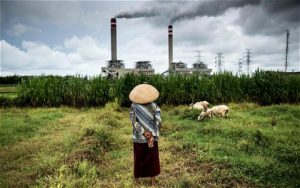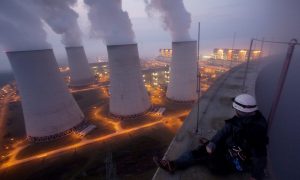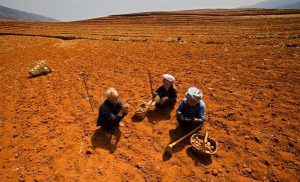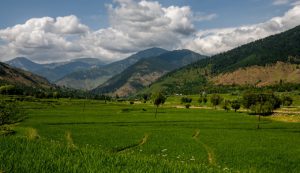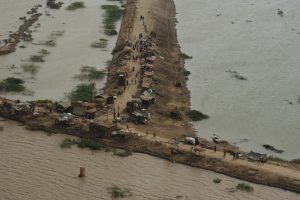This year is a milestone for sustainability and development. It is the year in which the United Nations will adopt its Sustainability Development Goals (SDGs) for the next 15 years and agree on a new deal on international climate action.
These two major and intrinsically linked efforts signify a new era, one that takes our economies beyond the paradigms of economic growth and social well-being and one that acknowledges the need for a more holistic approach that includes environmental integrity.
The United Nations Financing for Development (FfD) Programme is the platform designed to work out how to fund processes that create global goals, like the SDGs, so that they can meet their objectives. It has done valuable work over the years to establish clear strategies for financing the outcomes of numerous global summits such as the Rio de Janeiro Earth Summit in 1992.
In the years since the first FfD conference took place, our global economy has had to deal with mounting costs associated with our changing climate. Climate change-fueled disasters such as Cyclone Pam, Hurricane Sandy and Typhoon Haiyan show why clear, reliable pathways to climate finance – a long term piggy bank for eradicating poverty and inequality and building sustainability into our economies – are a vital part of the international development picture.
Extreme events like these demonstrate how the very same people who struggle to overcome poverty and inequality now also have to deal with climate-related impacts that threaten their livelihoods.
So, rather than considering the two as issues to be tackled one after the other, climate change and environmental degradation need to be central themes in the fight to eliminate poverty and inequality.
Now, in 2015, with these major summits bearing down on us, along with worsening climate impacts, we need to ramp up international efforts and support to address the growing costs of our changing climate.
But the third FfD Conference in Addis Ababa in mid-July, sadly, did little to address these growing costs. Nor did it contribute to the question: how will we, as a global economy, meet these costs? Its ‘Action Agenda’ re-iterated the need to meet existing climate finance commitments, but provided no guidance on how these commitments can be met in a predictable and consistent way. While there is an emphasis on the need for donor countries to communicate the delivery of climate finance in a transparent way, there is no signal that such finance should be delivered without displacing official development assistance for key objectives such as healthcare and education.
As we advance towards COP21 in Paris this December, richer countries will need to show how they will meet their existing commitments and make additional ones that will see the financial resources on the table, up to 2020 and beyond.
However, with all of the challenges presented across the Action Agenda, the document only made a minor reference to innovative sources of finance to help deal with these challenges.
Innovative sources of finance present great, untapped potential to deliver additional resources for action on the ground. The United Nations Environment Programme (UNEP) estimates that between US$26-115 billion (161-713 billion yuan) could be raised by 2020 from just three innovative sources: auctioning of emission trading allowances, revenues from levies placed on international transportation, and a financial transaction tax (FTT) to support climate change measures.
Other opportunities include a proposal for a global fossil fuel extraction levy, which puts a fee on the operations of large fossil fuel companies. This, in the year of the Paris climate conference, should be the time that potential starts to become a reality.
Similarly, the Action Agenda expressed the importance of greater Southern (developing country) cooperation to increase action on the ground. Broadening the list of actors involved in providing resources and finance will be crucial, particularly as we enter this new phase of sustainable development. The growing role of Global South-based development banks such as the Asian Development Bank and African Development Bank will be highly significant for countries striving to advance their economies.
South-South co-operation
But this newer pool of actors needs clearer guidance and incentives to make sure that South-South cooperation delivers key sustainable development needs and objectives in a warmer world.
To make sure our financial system works for both people and the planet, we also need to drastically increase investments and support for low carbon, climate-resilient solutions while simultaneously phasing out high-carbon activities and projects. The Action Agenda’s proposal lacked any clear ambition to phase out environmentally harmful subsidies, including those given to fossil fuels.
Here, too, the declaration is similar to many past announcements, filled with vague language and loose promises. This is not enough, particularly in light of the recent IMF report that calculated public expenditure on fossil fuel subsidies in 2015 amounts to US$10 million (62 million yuan) per minute.
Ambition
Stronger commitments to phase out environmental subsidies are needed if we are really to stimulate a just transition to low-carbon, fossil fuel-free economies.
But not all hope is lost. The Sustainable Development Summit in New York in September, and the Paris climate summit at the end of the year, can provide additional platforms for solutions. As we approach these crucial summits, our leaders should look at FfD outcomes as a small but crucial step towards long-term action and international cooperation on poverty eradication and climate action. The FfD conference may not have set the bar to a high level of ambition this month, but we cannot afford to let go of our vision of the kind of world we want.
We are at the beginning of a long road to prosperity for all, where people and the planet are at the centre of our global efforts, and we have a unique opportunity over the coming months to make it a successful journey.
